World's most delicious street food dishes – which British favourites made the list?
How many of these delicious street foods have you tried?

Foodio/Shutterstock
Trying new food is one of the best things about travelling, and the best way to get a taste of a place is through its street food. Available from stands, trucks, carts and markets, these easily portable dishes offer a glimpse into a destination's history, culture and culinary heritage. Here’s our pick of the world’s most delicious street food, including cultural icons such as currywurst and tacos and culinary gems such as walkie talkies and fischbrötchen.
Read on as we reveal the greatest street food dish of them all.
We’ve based our ranking on the enduring popularity of each street food in its place of origin and beyond, and on the opinions of our well-travelled (and well-fed) team. The list is unavoidably subjective.
51: Hot jam doughnut, Australia

thehotjamdonutvan/Facebook
Many cultures have their version of a jam or jelly doughnut, but in Victoria, Australia, they do things a little differently. The speciality here is the hot jam doughnut, which has a dough with more yeast than most other types. After the dough has proven and is filled with jam, it's deep fried and served at once. The jam and the doughnut should be scolding hot when you bite into it – otherwise you're not experiencing the real deal. It's possibly the only region in Australia, or even the world, that serves them this way.
50: Pierogi, Poland

Juli Scalzi/Shutterstock
The word pierogi is derived from the Polish word meaning 'filled dumpling' – so it's no surprise that pierogi are in fact filled dumplings! What is surprising, though, is that people can stuff their dumplings with just about anything they like and still call it pierogi. Classic fillings include potatoes and cheese, or beef and sauerkraut, but you could just as easily use berries or chocolate for a sweet twist.
49: Pissaladière, France

page frederique/Shutterstock
Often compared to pizza or focaccia, pissaladière is a unique dish worthy of its own place in food culture. Importantly, the base of pissaladière is thicker than a traditional pizza base – and you won't find tomato or cheese anywhere near the tasty flatbread. Instead, the most common toppings are anchovies, black olives and melty caramelised onions. Food historians have traced the origins of pissaladière all the way back to 14th-century Nice.
48: Empanada, various locations

Brent Hofacker/Shutterstock
It's hard to claim that empanadas definitely originated in Spain because the portable turnovers are associated with cuisines from all over Latin America and the world, from Argentina to the Philippines. But it's generally believed that empanadas had their roots in 7th-century Galicia in northwest Spain, before becoming popular across the globe. And rightly so – who can resist a baked or fried pastry that's filled to bursting with meat, cheese or vegetables, after all?
47: Pupusa, El Salvador
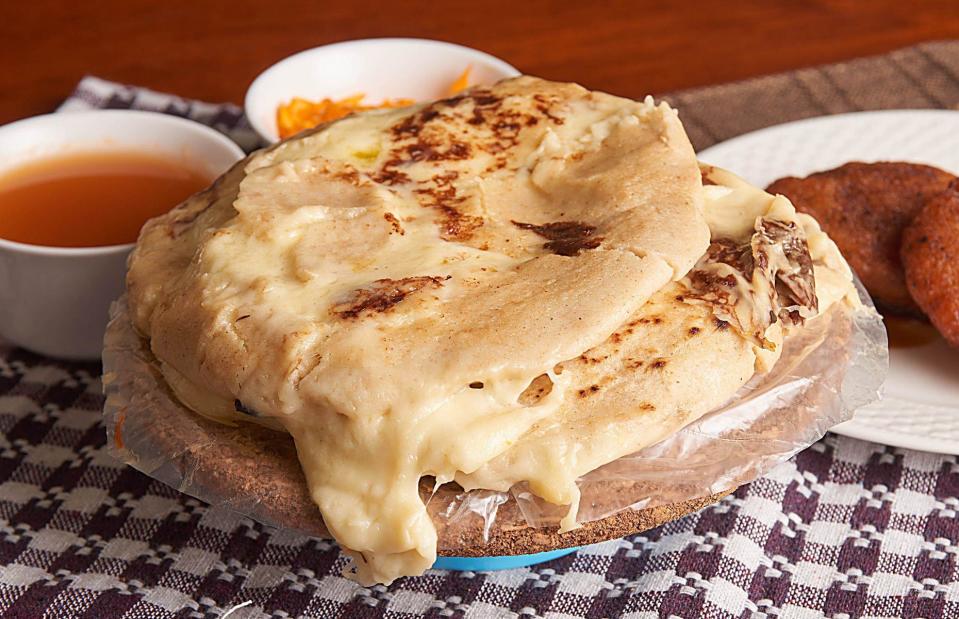
Banana Productions/Shutterstock
The national dish of El Salvador, the pupusa has its very own day dedicated to it. One bite and anyone with taste buds will understand why. This thick griddle cake or flatbread is made from cornmeal or rice flour, then stuffed with cheese or refried beans and accompanied by a fermented cabbage slaw with a serious kick. Its invention is credited to the Pipil tribe, more than two millennia ago, though it didn't become nationally popular until the early 20th century.
46: Waffles, various locations

Pramen/Shutterstock
The history of the waffle is a long and complicated tale that involves the ancient Greeks, medieval Europe and just about everything in between. Along the way, the humble waffle evolved from a thin wafer to the thicker treat we know and love today – and that's not even mentioning all the different varieties of waffles served around the world. The Belgian waffle is probably the most famous style, with the Dutch stroopwafel and the American waffle proving almost as popular.
45: Làngos, Hungary
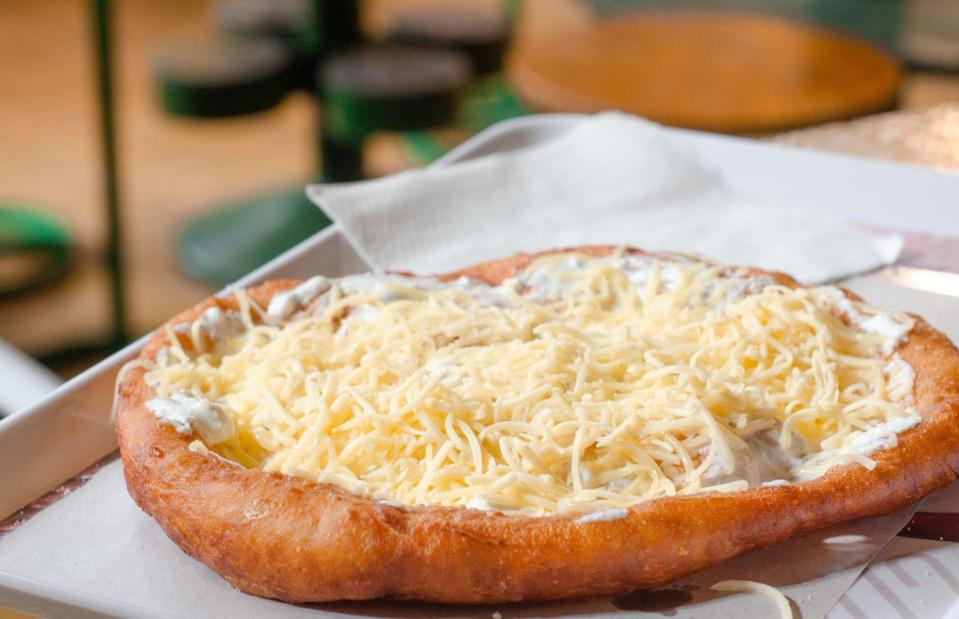
Pfeiffer/Shutterstock
Served from street food vendors across Hungary, làngos is a fluffy, deep-fried bread often rubbed with garlic and salt and topped with anything from sour cream and grated cheese to ham, sausages and yogurt. The savoury bread was traditionally made in a clay oven and apparently rose in popularity during the Hungarian Revolution in 1956 as people looked for comforting sustenance.
44: Jerk chicken, Jamaica

T photography/Shutterstock
Jerk has been a Jamaican tradition for generations, passed down from Indigenous communities and coming to the attention of everybody else from the 17th century onwards. Chicken is marinated or rubbed in a jerk spice (usually containing allspice and chillies) overnight and then grilled until juicy and hot. Famously fiery, it's a street food favourite throughout the island and enjoyed in many countries all over the world.
43: Käsekrainer, Austria
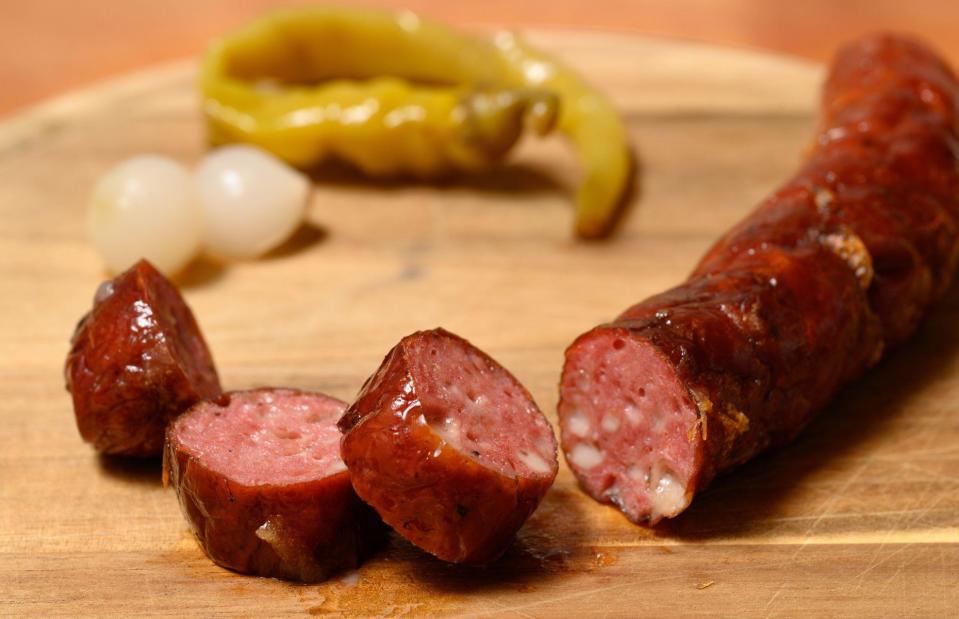
Dietmar Rauscher/Shutterstock
This lightly smoked pork sausage – laced with cubes of cheese – is traditionally served with a bread roll and a helping of mustard or fresh horseradish. Now a popular street food snack found across Austria, it’s said to have been invented by two butchers from Upper Austria in the late 1960s. It can also be roasted or grilled.
42: Blini, Eastern Europe
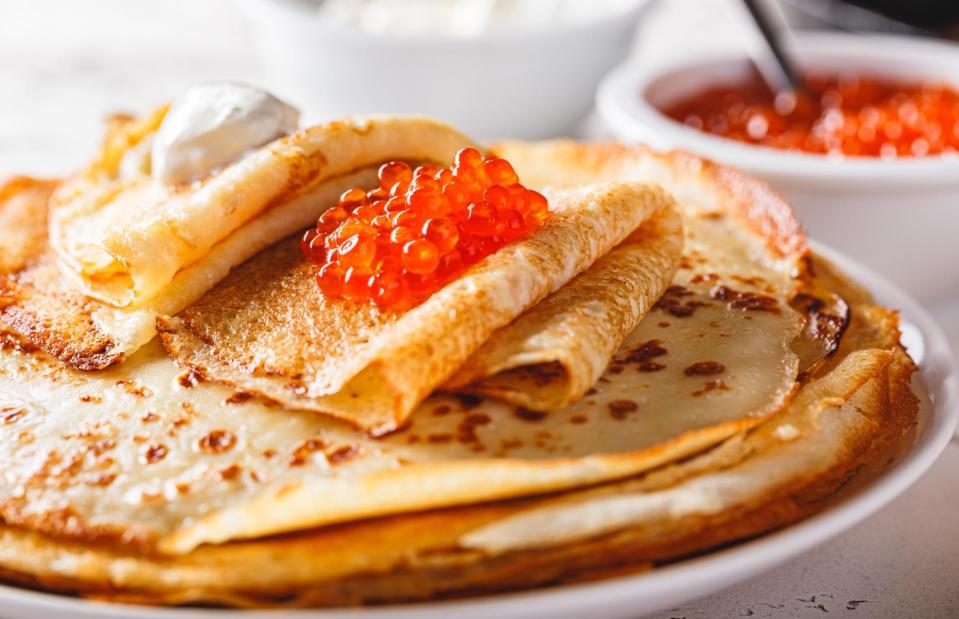
Irina Burakova/Shutterstock
This traditional pancake was first made in pre-Christian times as a symbol of the sun. It was particularly popular at the end of winter, eaten to usher in the return of those rays. The batter of flour, eggs, milk, yeast and salt is cooked quickly, resulting in a big, thin pancake topped with various additions such as cheese, meat, fruit, jam and, the most well-known option, caviar. In the West, mini versions have become popular as a posh party snack. In Eastern Europe, though, they're large and sold from street food stands.
41: Donair, Canada
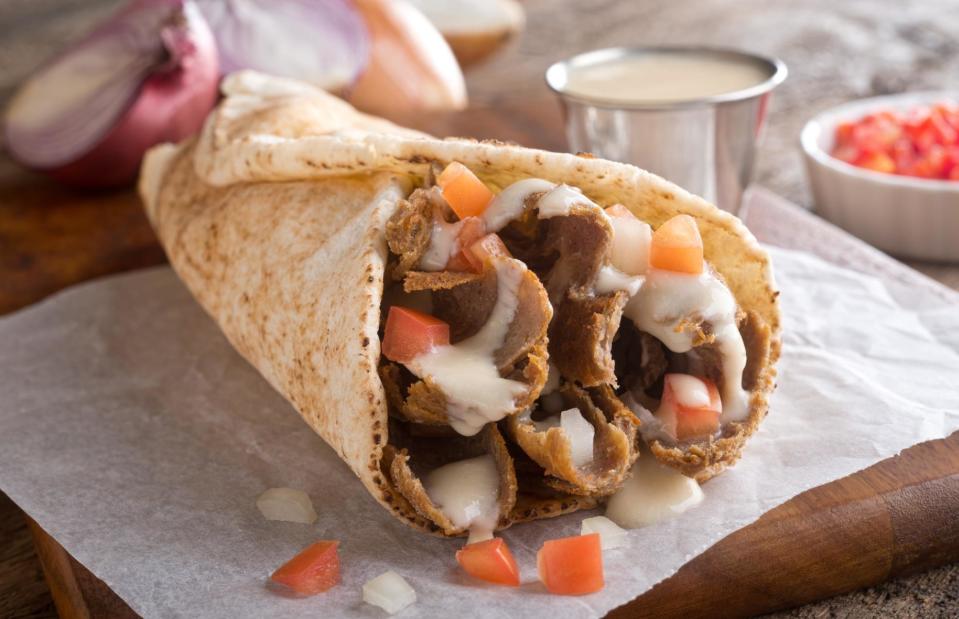
Foodio/Shutterstock
Donair is the official food of Halifax in Nova Scotia and will not disappoint – particularly as a late-night snack or hangover cure. It's said to have been invented in the 1970s by Greek immigrant and restaurateur Peter Gamoulakos, as a riff on the classic Greek gyros (more of which later). He experimented and found the winning combination for Halifax residents: a pitta packed with spit-roasted shaved beef, tomatoes, onions and the trademark sweet and garlicky donair sauce.
40: Pasty, UK
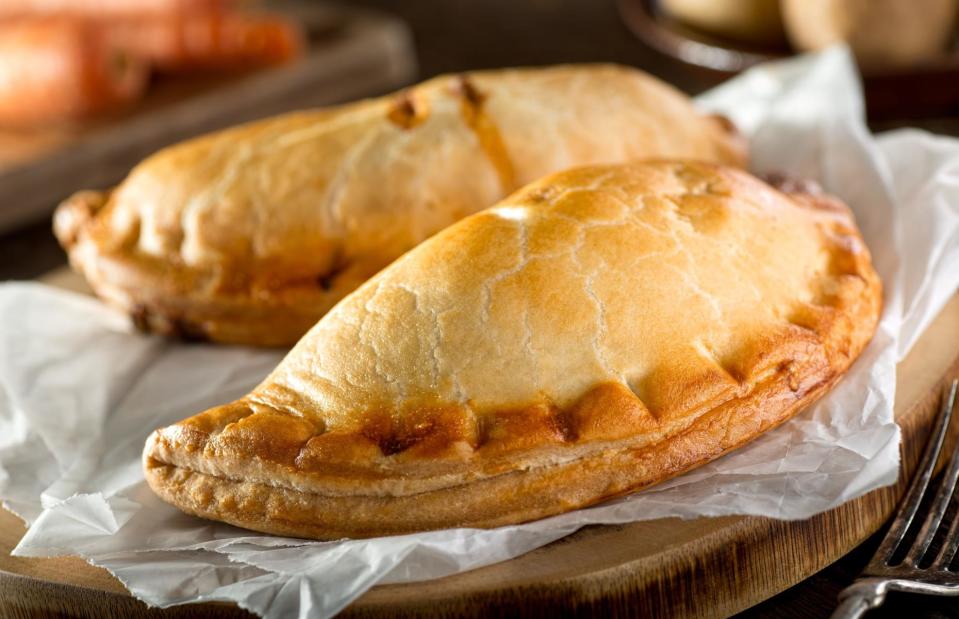
Foodio/Shutterstock
The origins of pasties are unclear, but today they're a speciality in the most south-westerly point of the UK: Cornwall. They're referenced as far back as the 13th century and proved especially popular with Cornish tin miners as a complete meal that could be carried easily and eaten without cutlery. The D-shaped crimped pastry is traditionally filled with beef, potato, swede and onion, but endless variations now exist across the county.
39: Walkie talkies, South Africa
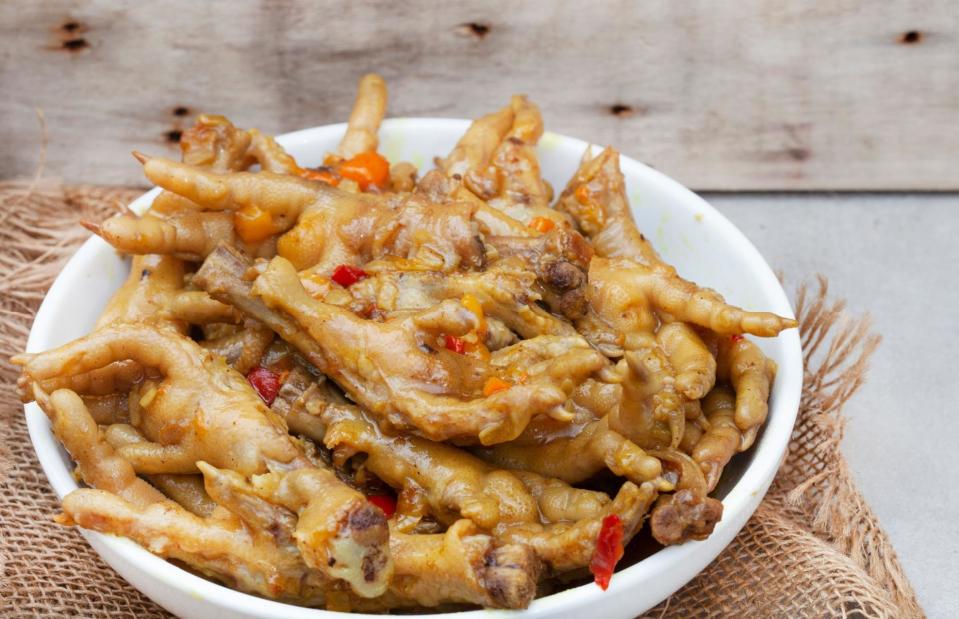
Aninka Bongers-Sutherland/Shutterstock
People eat chicken feet in many different countries, including China, Mexico and Korea. In South Africa, though, chicken feet (walkies) and heads (talkies) are often eaten together to create 'walkie talkies'. They're boiled, seasoned heavily and grilled. To eat them, you scrape the super crispy skin and meat off with your teeth, then chew the remainder.
38: Polish Boy, USA

Brent Hofacker/Shutterstock
The hot dog in all its many variations is a street food classic, but Ohio's Polish Boy takes things a few steps (and ingredients) further. This Cleveland culinary native consists of a bun filled with kielbasa sausage and fries, all smothered in BBQ sauce and coleslaw. Today, you can find all sorts of alternative toppings at street carts (and restaurants) around the city and across the entire state.
37: Quesadilla, Mexico

Brent Hofacker/Shutterstock
Few dishes are more comforting than quesadillas, which is probably why people have been eating them for hundreds of years. Thought to have been invented in the 1500s after the Spanish arrived in Mexico, quesadillas are a beautiful combination of cheese (other optional fillings range from black beans to slow-cooked pork) and tortillas. Traditionally, the fillings are piled into a tortilla and then placed in a hot pan until the tortilla is slightly crispy and the cheese is deliciously melty.
36: Doubles, Trinidad and Tobago
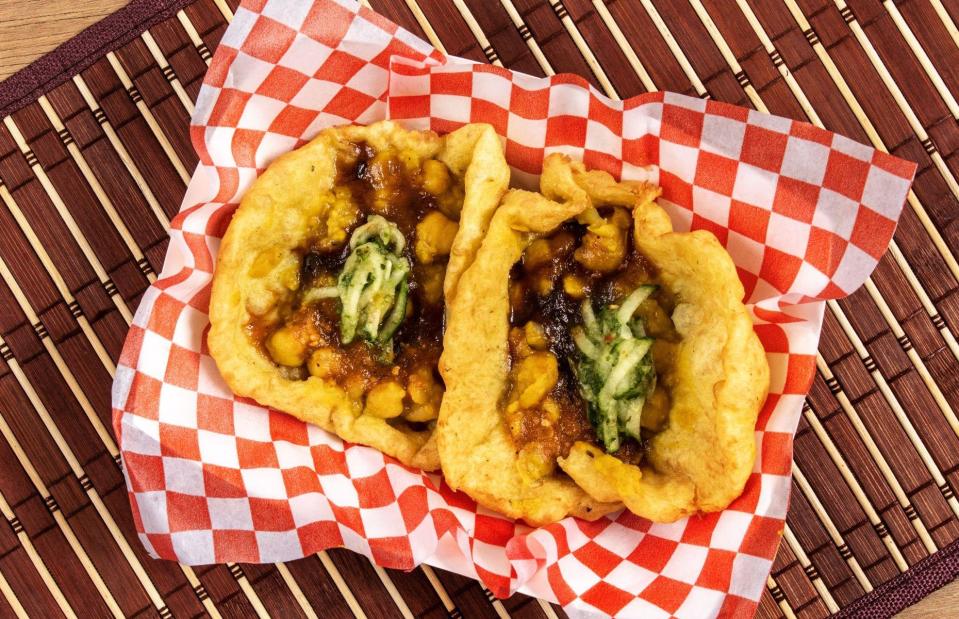
sockagphoto/Shutterstock
One of Trinidad and Tobago’s most popular street foods, doubles is a dish made up of two pieces of fried flatbread (baras), traditionally topped with curried chickpeas and chutney. Enjoyed for breakfast from street vendors and restaurants, its origins can be traced back to 1936, when Emamool and Raheman Rusulan Deen started selling the delicacy from their stall in Princes Town.
35: Jiaozi, China
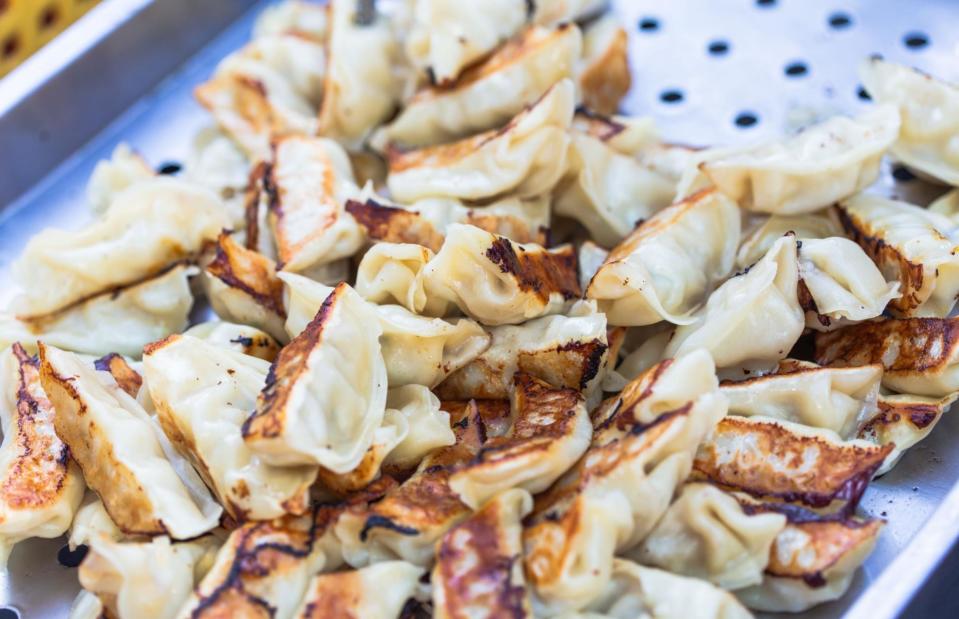
monster_code/Shutterstock
These Chinese dumplings – often called gyoza in other countries – are made with thin pieces of dough filled with ground meat and vegetables like spring onions and Chinese cabbage. Each tasty package is then sealed by pressing the edges together, and the resulting dumplings are boiled, steamed or fried, then traditionally served alongside a black vinegar and sesame oil dip.
34: Takoyaki, Japan
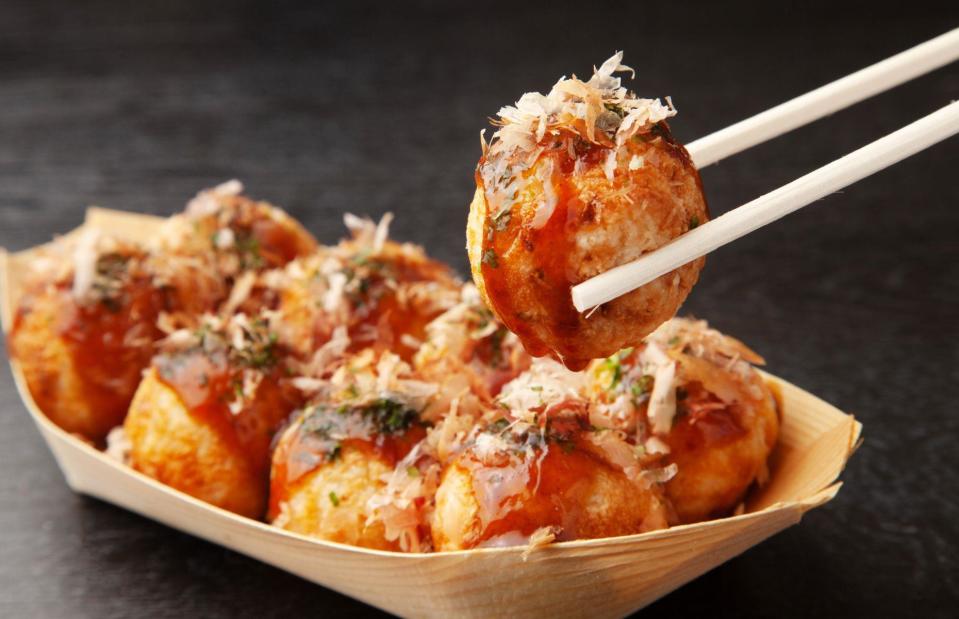
sasazawa/Shutterstock
These sphere-shaped snacks have been a part of Japanese street food culture for almost a century. Made from a wheat flour batter and cooked in searingly hot, moulded pans, you’ll usually find them stuffed with minced octopus, pickled ginger and onion. Thought to originate in Osaka, it’s believed that vendor Tomekichi Endo created this delicious savoury treat in 1935. Nowadays, you'll find them all across Japan and the world.
33: Sate kambing, Indonesia
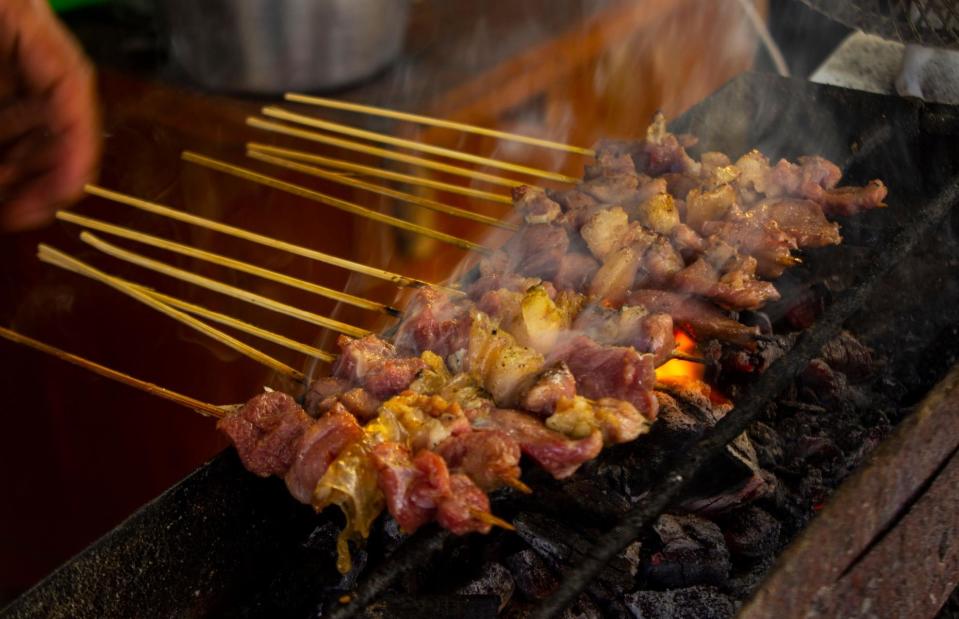
Faiz Dila/Shutterstock
Sate kambing or mutton satay is a staple of Indonesian cuisine. It starts with chunks of goat meat marinated in seasoning often featuring puréed pineapple juice, sweet soy sauce, ground shallot and galangal. The marinated cuts of meat are threaded onto a skewer, grilled and served with peanut sauce or a thick black sauce made of kecap manis.
32: Scotch egg, UK
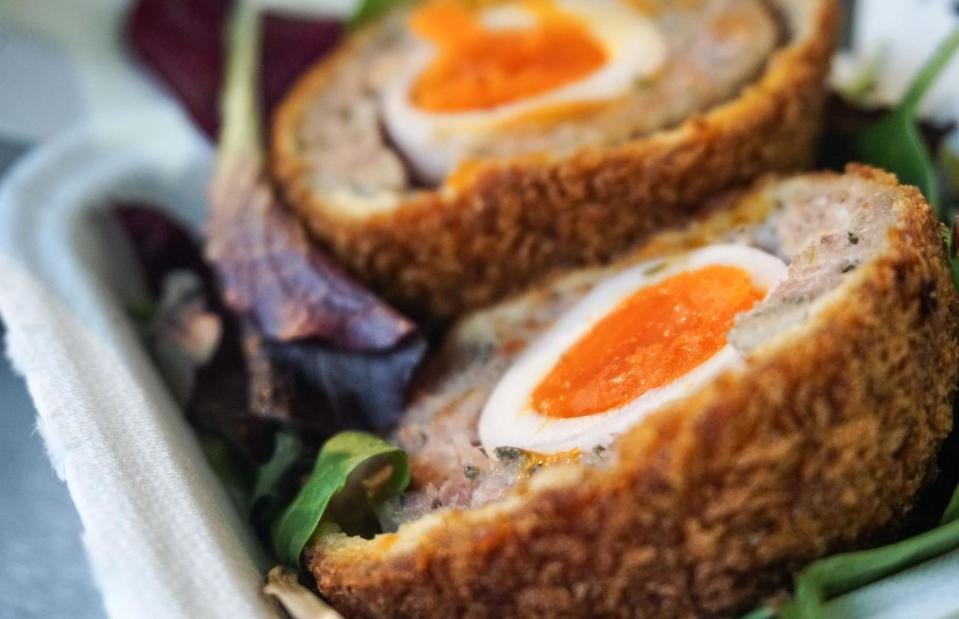
chloegunning/Shutterstock
To make a Scotch egg, take one boiled egg, wrap it in sausage meat, coat it in breadcrumbs and deep fry it. The backstory of this British street food snack is murky, but it's believed they were invented in the 19th century – with cooks possibly being inspired by similar dishes from around the world. Today, they're eaten hot or cold and are a popular picnic food. You'll find them at many food markets across the UK.
31: Pani câ mèusa, Italy

Paolo Paradiso/Shutterstock
A spleen sandwich might not sound like the most obviously tasty snack, but just wait until you try this popular Sicilian street food. The pani câ mèusa was created in the 15th century by Jewish butchers in the city of Palermo. They took a soft, sesame-topped vastedda bun and stuffed it with fried slices of veal lung and spleen. This humble meat sandwich is brought to life with a squeeze of lemon and sometimes topped with ricotta, too.
30: Dagwood dog, Australia
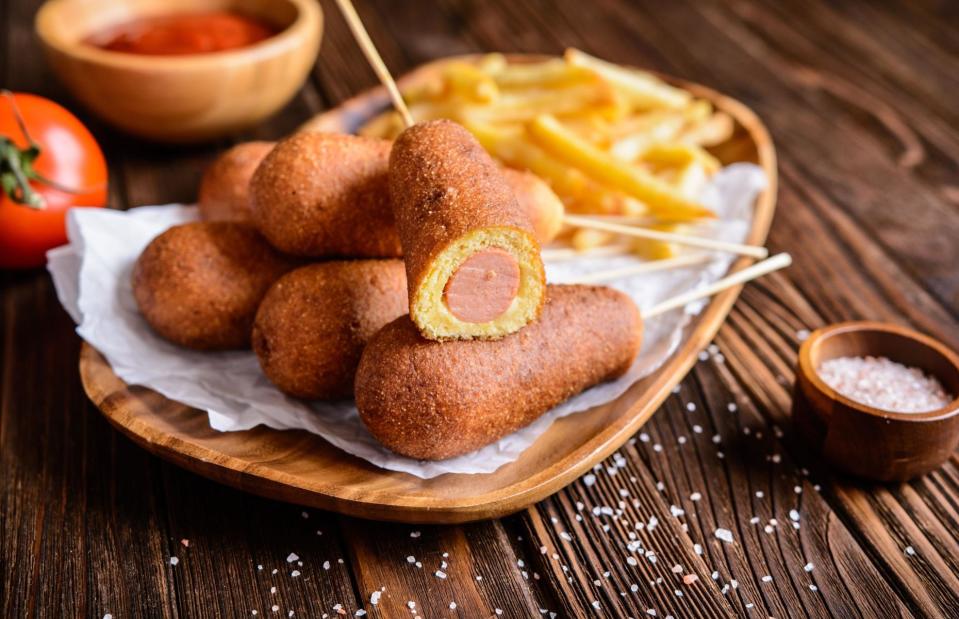
NoirChocolate/Shutterstock
At any festival or food market in Australia, your chances of finding a Dagwood dog are pretty high. This savoury street food snack, inspired by the US-invented corn dog and named after an American comic strip character, consists of a hot dog on a stick, coated in batter and fried for an easy (and very satisfying) snack on the go. Depending on which area you're in, it might also be called a dippy dog or a Pluto pup.
29: Fischbrötchen, Germany
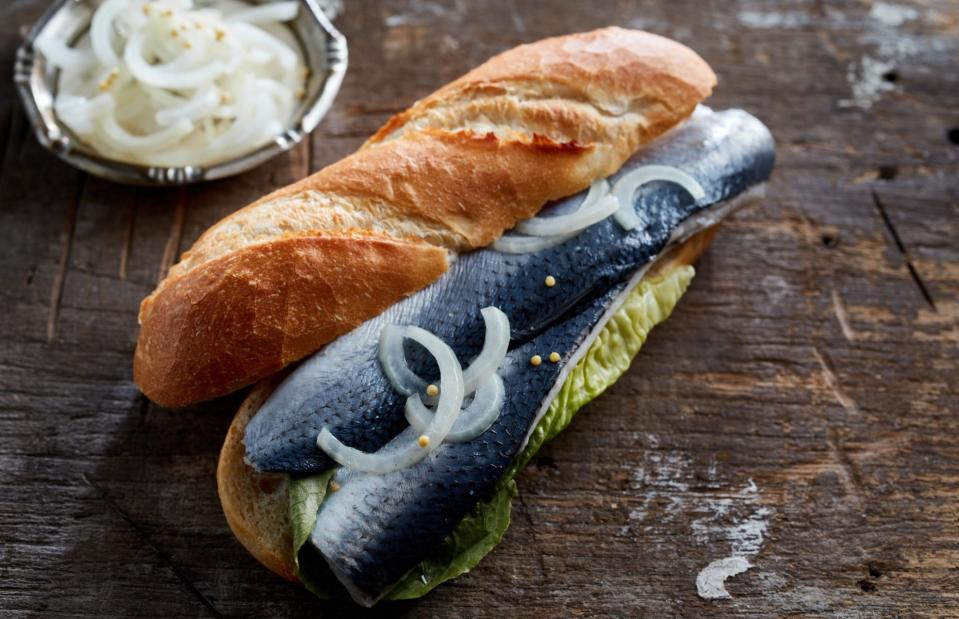
stockcreations/Shutterstock
This fish sandwich is popular across northern Germany thanks to its access to the coast and abundance of fresh seafood. Each sandwich may vary a little, but the basic idea remains the same: a long bread roll filled with fish and a few other accompaniments such as onion, pickles, remoulade and horseradish sauce. Herring, sprat and mackerel are often used in fischbrötchen.
28: Pretzel, various locations

Dmitry SKilkov/Shutterstock
Nobody is certain where pretzels come from, but most accounts credit European monks for their creation. The snack has deep roots in Germany, becoming part of the culture no later than the 12th century. German and German-speaking immigrants brought the treat to North America in the 18th century, and pretzels have been a New York City staple since the 1800s. In the US, they're sold – hot and fresh – from street carts. Slightly crisp on the outside and tender on the inside, this style is boiled, baked and topped with a generous flaking of salt.
27: Arancini, Italy
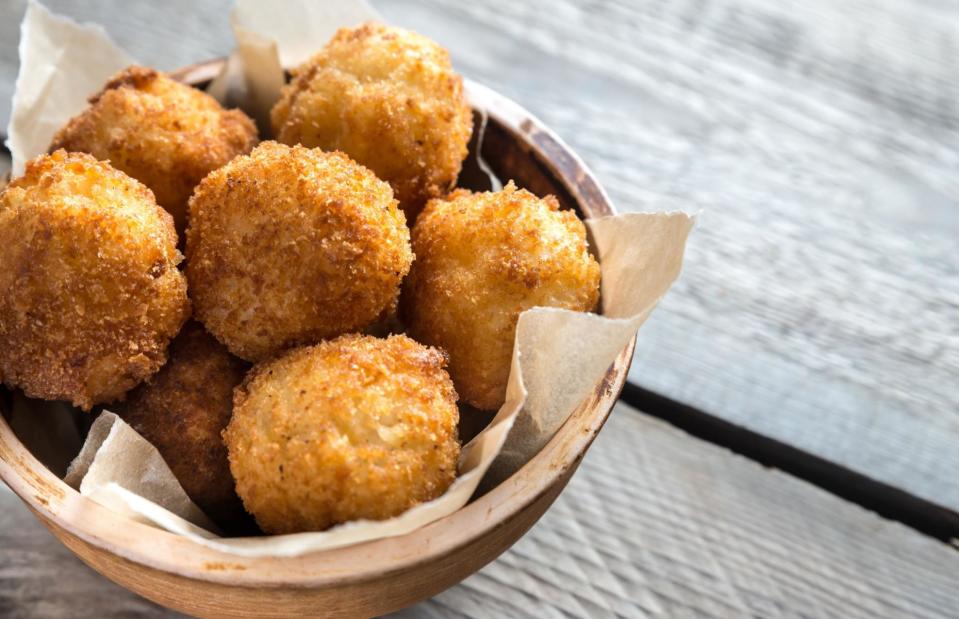
Alexander Prokopenko/Shutterstock
A Sicilian delicacy, these Italian rice balls are stuffed with all manner of fillings, rolled in breadcrumbs and deep fried. Popular fillings include ragu, mozzarella, caciocavallo cheese and peas. It's believed they were invented in the 10th century during the Kalbid rule of Sicily, and they're now celebrated each 13th December in Palermo, when the city is packed with carts selling various takes on this beloved Italian classic.
26: Elote, Mexico

brenda valenzuela/Shutterstock
The simple but oh-so-delicious elote has been enjoyed in Mexico since pre-Columbian times. Served hot, elote (or Mexican street corn) consists of corn on the cob smothered in mayonnaise and lime and topped with crumbly Cotija cheese and chilli powder. The best way to eat it is by holding it by the stalk and diving right in after it's been grilled until slightly charred by a street food vendor.
25: Bunny chow, South Africa
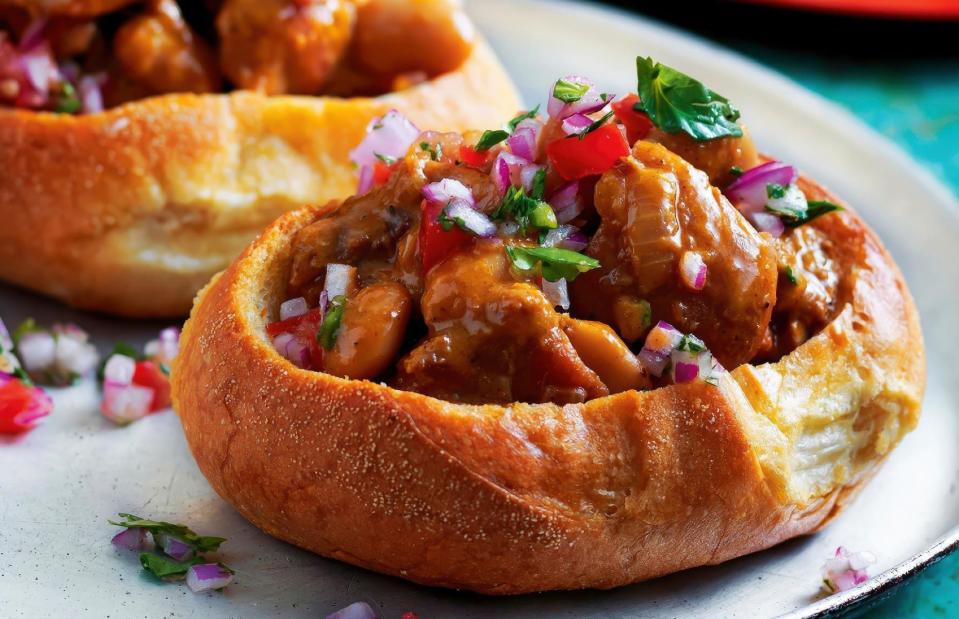
Thao Lan/Shutterstock
This ubiquitous South African dish consists of a hollowed-out roll, or quarter loaf of bread, filled with vegetable, chicken or lamb curry. Bunny chow was popularised in Durban in the 1940s, after being developed by the city's Indian immigrant workers – the bread bowl was their ingenious idea for a portable lunch. So beloved is the dish, each year a 'Bunny Chow Barometer' is held on the south bank of the Umgeni River, with competitors vying for status as top bunny maker.
24: Fish and chips, UK
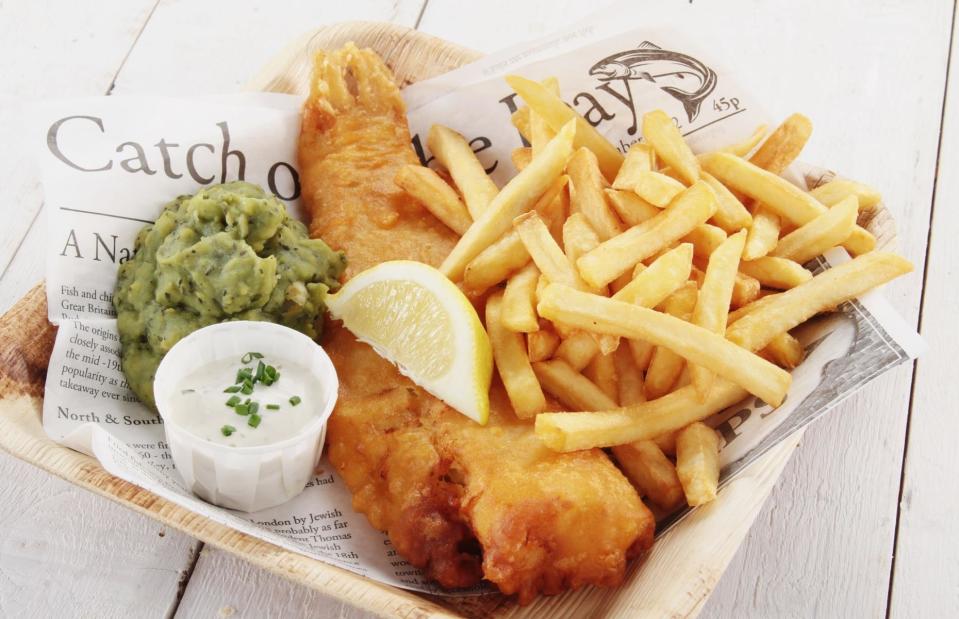
neil langan/Shutterstock
Fish and chips is pure British comfort food, consisting of battered white fish (typically cod or haddock) served with a portion of chips, traditionally fried in beef fat (dripping). It also tends to be seasoned liberally with salt and vinegar, while a portion of mushy peas and/or tartare sauce on the side is a must for many. The dish is served in many restaurants and pubs but, for the best experience, order it from a chippie, where it's served wrapped in paper or in an open container, ready to eat outside – preferably by the sea.
23: Philly cheesesteak, USA
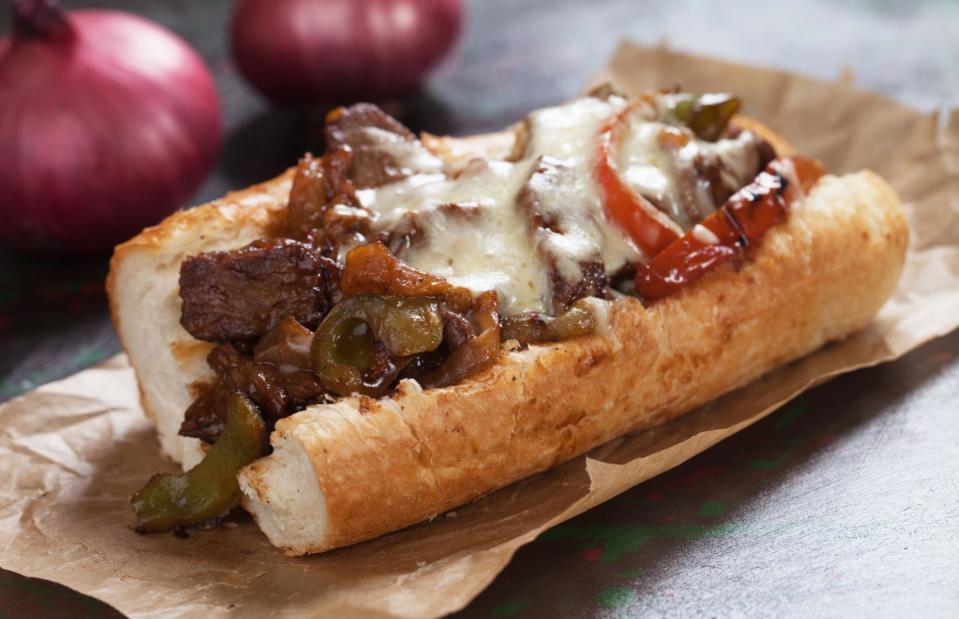
Igor Dutina/Shutterstock
The Philly cheesesteak hails (of course) from Philadelphia, but this taste sensation has been transported far and wide since its conception in the early 20th century. The dish consists of a crusty hoagie roll split and filled with thin slices of beefsteak (usually rib-eye or top round) covered in oozing melted cheese. Sometimes sautéed onions and peppers, grilled mushrooms, hot sauce or ketchup are added.
22: Meat pie, Australia and New Zealand
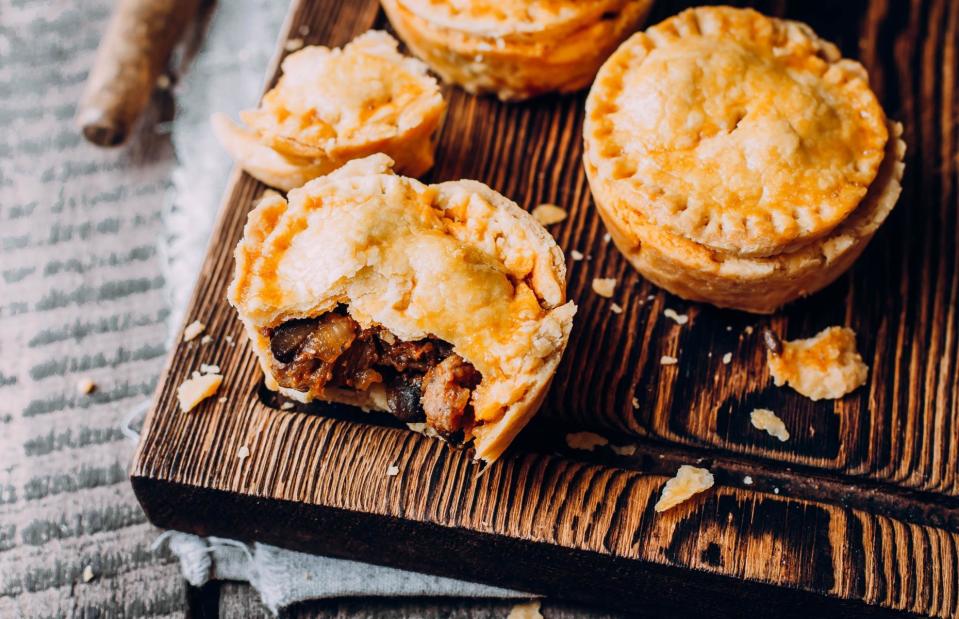
AnikonaAnn/Shutterstock
A hand-sized pie filled with minced or diced meat and gravy and often topped with a dollop of ketchup, the meat pie sits somewhere between a snack and a full meal. It's been reported that the average Australian eats 12 meat pies a year, with the average New Zealander consuming 15. Each country claims the meat pie as something of an unofficial national dish, while the annual Great Aussie Pie Competition is always hotly contested.
21: Bánh mì, Vietnam

RFondren Photography/Shutterstock
The baguette was introduced to Vietnam by the French in the mid-19th century, and by the 1950s, the bánh mì was a firm favourite in Saigon. Each bánh mì starts with a crisp on the outside, airy on the inside Vietnamese baguette that's sliced and loaded with fillings including meat (usually pork), coriander leaves, pickled carrot and shredded radish. It's all finished with mayonnaise or oyster sauce.
20: Falafel, Middle East
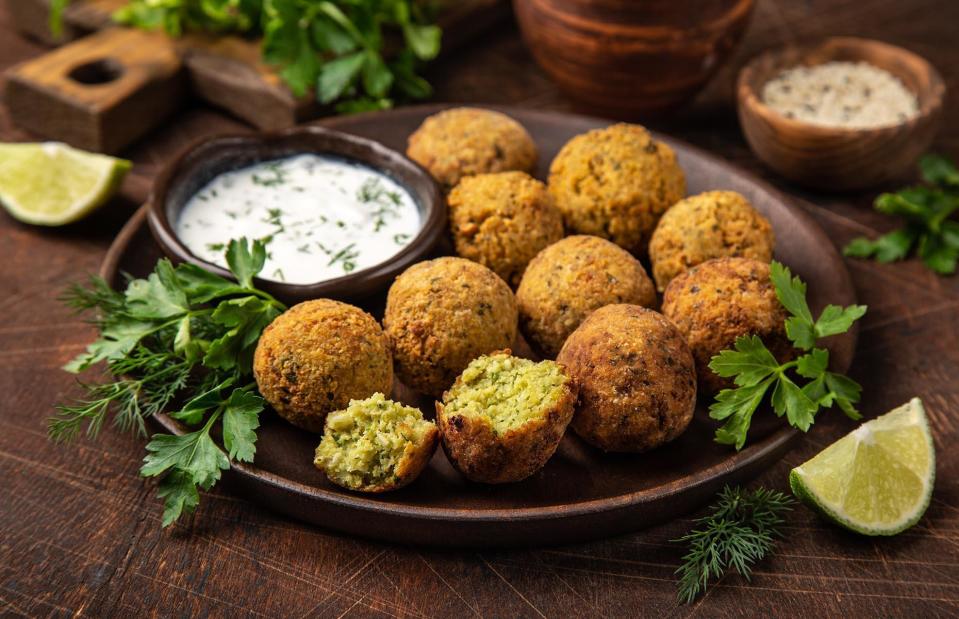
Anna Shepulova/Shutterstock
Today, falafel – deep-fried balls of highly flavoured ground chickpeas – are eaten around the world, yet nobody can agree on where they first came from. Popular across the Middle East, and one of Israel's national dishes, it's thought falafel most likely evolved in Egypt. Today, they're most often enjoyed tucked into a flatbread with salad and topped with hummus or another tahini-based sauce.
19: Arepa, Venezuela and Colombia

nehophoto/Shutterstock
Arepa is a type of bun made from ground maize, eaten across areas of South America since pre-Columbian times. These days, it's an everyday staple in Colombia and Venezuela. The flat, round, unleavened patty – which can be steamed, boiled, fried or baked – is stuffed with all sorts of delicacies depending on the region, with popular options including cheese and butter, fried eggs, beans, meat or fish.
18: Tartiflette, France

from my point of view/Shutterstock
Tartiflette is a surprisingly modern invention, only achieving mass popularity in the 1980s after it cropped up as an après-ski eat at ski resorts. That's certainly a suitable location for a street food dish that originated in the Savoy region of the French Alps. Best served piping hot, tartiflette is a to-die-for combination of potatoes, Reblochon cheese, bacon lardons and onions.
17: Poutine, Canada
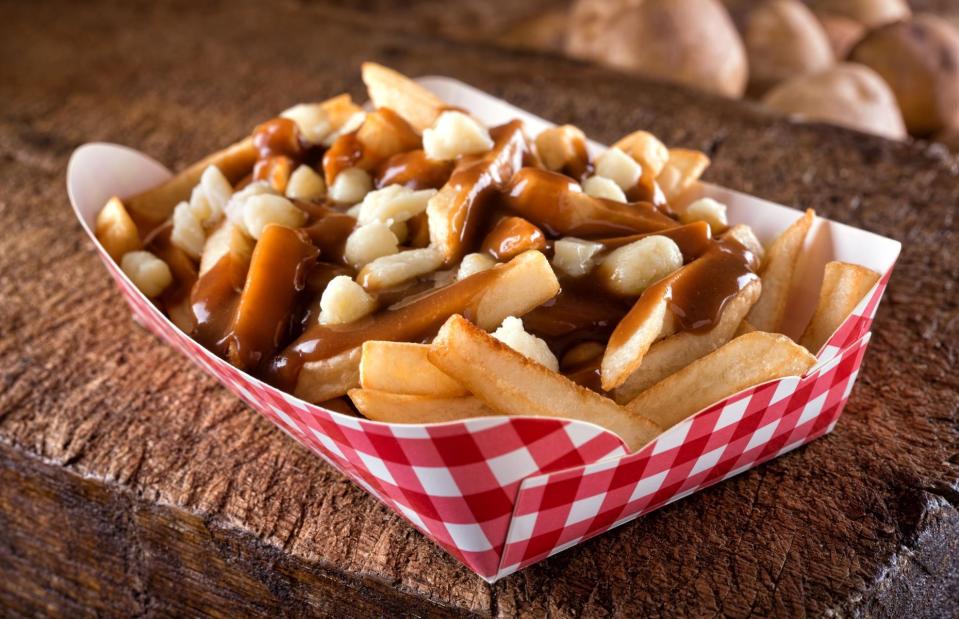
Foodio/Shutterstock
Take one serving of French fries, smother them in a hearty meat gravy and top with cheese curds, and you’ve got yourself poutine. Said to have emerged in Quebec in the 1950s, its exact origin story is unknown, yet it’s undoubtedly achieved icon status across Canada and beyond. Today, it's often referred to as Canada's national dish and annual poutine celebrations take place across the country.
16: Paella, Spain

nikkytok/Shutterstock
Valencians take their paella very seriously – as Jamie Oliver found out to his surprise in 2016. The celebrity chef shared a paella recipe that included a chunk of chorizo, and Spaniards online lambasted him for 'ruining' their native dish. To make authentic paella it all starts with the rice, which should be short grain (specifically bomba or Calasparra) which absorbs liquid without becoming mushy. In terms of fillings, traditional Valencian paella includes rabbit, chicken and sometimes snails, while paella de marisco (seafood paella) includes seafood like prawns, mussels, clams and squid.
15: Gryos, Greece
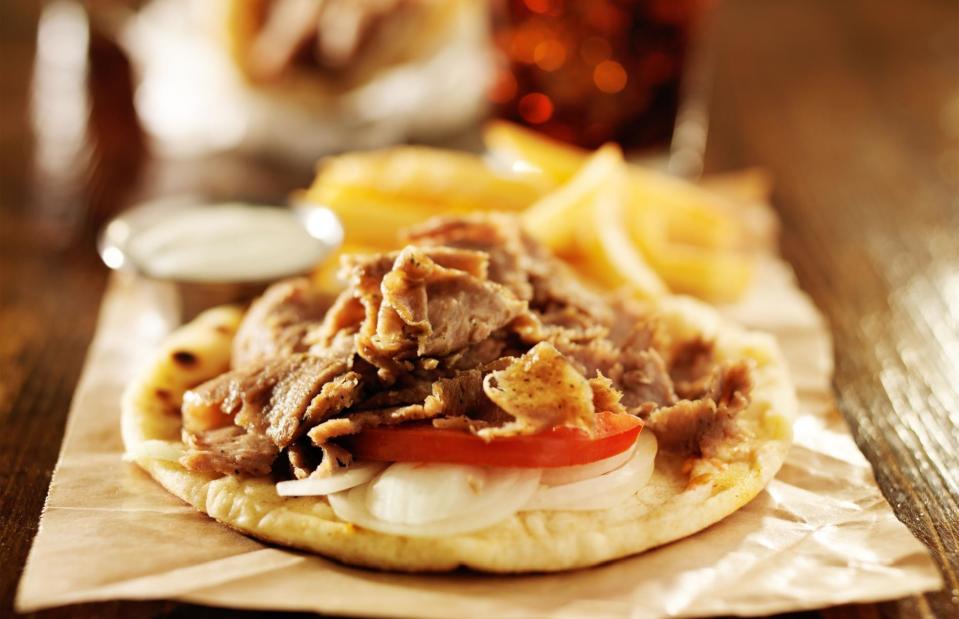
Joshua Resnick/Shutterstock
Gyros is a popular Greek street food that's now enjoyed around the world, though it rarely tastes better than when eaten in its place of origin. It consists of a pitta stuffed with meat that's been cooked on a vertical spit and then served in thin shavings. Popular accompaniments include cucumber, lettuce, onion and tomato with a tzatziki sauce. The meat portion of gyros dates back to the Ottoman Empire when a vertical spit was first used to cook meat.
14: Shawarma, Middle East
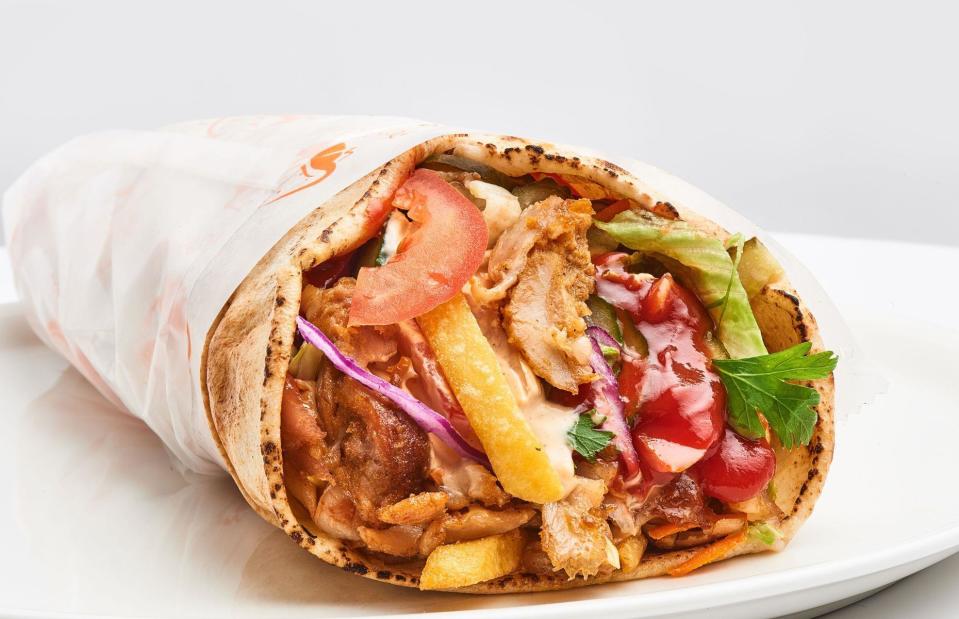
catalin eremia/Shutterstock
With a heritage dating back to the Ottoman Empire, shawarma has stood the culinary test of time for good reason. This hand-held dish packs a serious flavour punch, with marinated, slow-cooked meat wrapped up in a warm flatbread and finished with garnishes including pickled vegetables and tahini. Shawarma is an Arabic word meaning to rotate or turning – a reference to how the meat is cooked on a vertical grill.
13: Gua bao, Taiwan
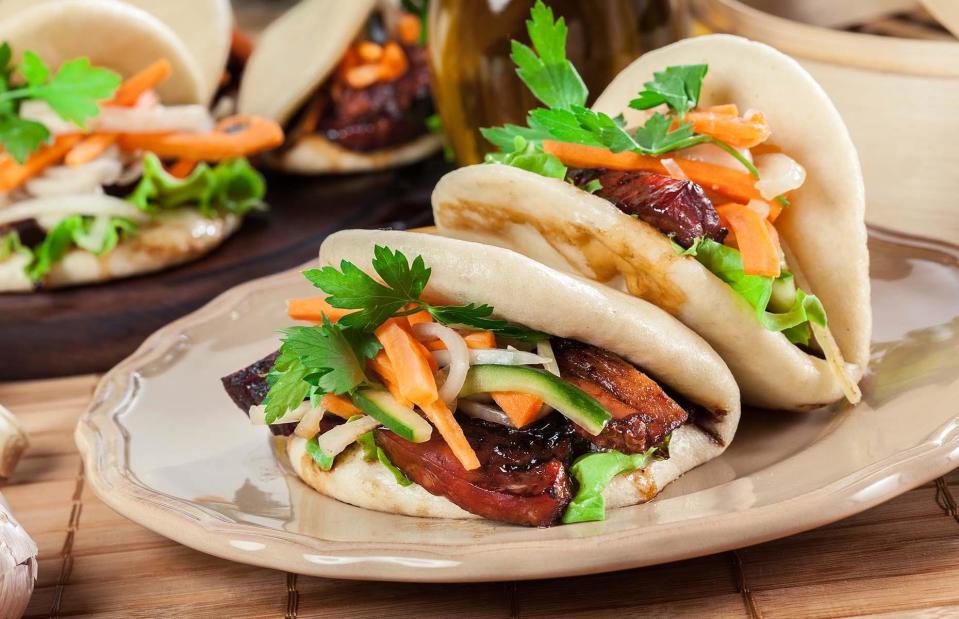
Slawomir Fajer/Shutterstock
A soft, steamed bun packed with braised pork belly, gua bao is sold by street vendors across the famous Taiwanese night markets. The meat is braised in a heady mix of soy sauce, red wine and spice powder. Once done, it's stuffed into the lotus leaf bun and topped with pickled mustard greens, coriander and ground peanuts.
12: Tamales, various locations

Ika Rahma H/Shutterstock
First eaten during the Aztec era, tamales consist of densely packed masa dough (made with ground corn) loaded with fillings such as meat, beans, eggs, root vegetables and seeds. It's then steamed in a corn husk or banana leaves. Traditional recipes are thought to have originated in Guatemala and Mexico, though their popularity has spread across Central and South America. Now eaten with or without sauces, the dish is enjoyed as street food, in restaurants or in tasty batches at home.
11: Hoppers, Sri Lanka

bonchan/Shutterstock
Close cousins of Indian dosas, these paper-thin pancakes are made from fermented rice batter and coconut milk. They’re cooked quickly and in a very deep pan, which is what gives them their unusual shape. Hoppers are served for breakfast and dinner, with sweet and savoury options available, though they’re most commonly enjoyed with an egg nestled inside to make for a more robust snack.
10: Dosa, India
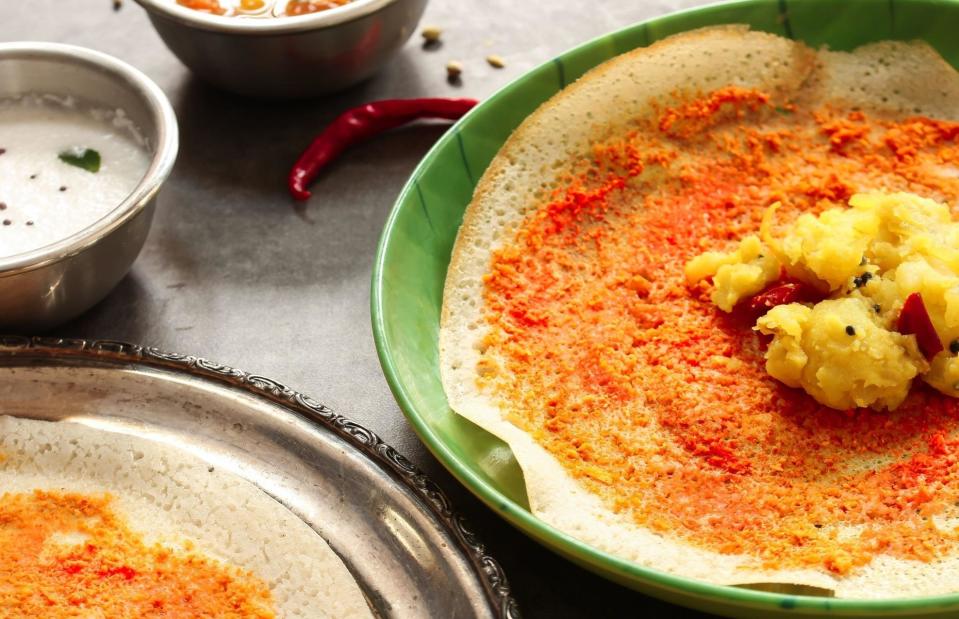
vm2002/Shutterstock
This thin savoury crêpe is an ancient Indian street food snack made from a fermented batter of rice and ground white gram. The batter is usually flavoured with a sprinkle of fenugreek seeds, bringing the characteristic golden hue and crisp texture. The dish dates back to at least the 1st century AD when it was recorded in Tamil literature. Dosas are usually eaten piping hot, either alongside chutney or topped with aloo bhaji or a lentil and vegetable stew.
9: Jambon-beurre, France

Nat/Wikimedia Commons/CC BY-SA 4.0
There are just three ingredients in a jambon-beurre sandwich: a baguette, butter and ham. But the secret to the success of a perfect jambon-beurre – and the reason why it's considered the king of sandwiches in Paris – is the quality of those ingredients. Only the best French baguette will do, and the butter must have a high butterfat content. There's none of that thin and watery supermarket ham, either. This Parisian staple needs top-quality sliced ham from a bone-in joint. Heaven.
8: Currywurst, Germany

Christin Klose/Shutterstock
Sold from snack stands, or schnellimbisse, throughout Germany, and also often on menus in diners, currywurst is one of the country's most popular street foods. The dish is said to have been invented by Herta Heuwer in 1949, when she resourcefully mixed tomato sauce with curry powder and poured it over a sausage. Just like that, an icon was born. It's typically sold with a side of chips or on a bread roll.
7: Hot dogs, USA

WS-Studio/Shutterstock
The humble hot dog’s exact origins are hard to track down, but German immigrants brought the general idea to the US in the 1800s. It’s thought the hot dog style we know today was first sold in New York City during the 1860s, sold by vendors across the city and beyond. In the 1890s, the hot dog firmly established itself as a go-to snack at baseball games. Enjoyed worldwide, the classic ketchup- and mustard-topped hot dog has gone on to inspire many variations.
6: Vada pav, India
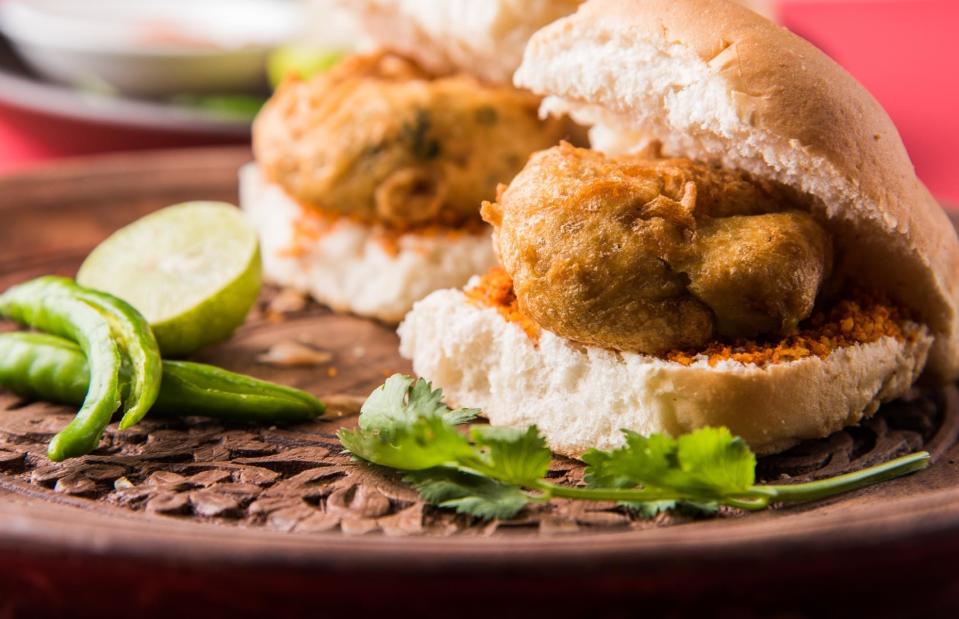
StockImageFactory.com/Shutterstock
First popularised in Mumbai in the 1960s, this vegetarian sandwich – sometimes called a Bombay burger – is now available from food stalls and markets across India. The dish is made up of potato mashed with chopped green chilli, garlic, mustard seeds and spices such as asafoetida and turmeric. Once shaped into a ball and dipped in gram flour, it's deep fried and served in a bread bun. You can jazz it up with an assortment of chutneys and green chilli.
5: Churros, Spain

Eduardo Lopez/Shutterstock
Did the Spanish, Portuguese or Chinese invent the churro? Well, people from each country could give you a convincing origin story. But Spain is the generally accepted home of this delicious fried dough, and Madrid is the place to find one of the most famous churros makers in the world. Chocolatería San Ginés opened in 1894 and can apparently churn out as many as 90,000 churros a day! They're eaten across Latin America, too.
4: Döner kebab, Germany

VGV MEDIA/Shutterstock
The Association of Turkish Döner Producers in Europe recognises Kadir Nurman as the inventor of the döner kebab. Nurman, a Turkish immigrant, started selling a flatbread stuffed with grilled meat and salad in West Berlin in 1972 after realising busy locals needed a meal they could eat on the go. Germany fell head over heels for the kebab and today it's estimated that Germans eat two million a day.
3: Pizza al taglio, Italy
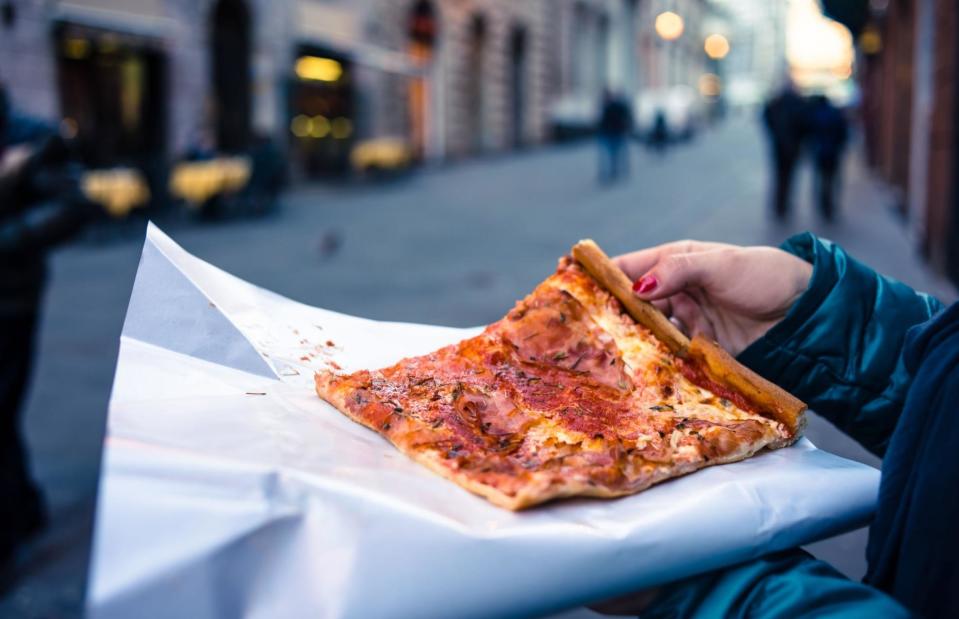
fornStudio/Shutterstock
Among Italy's most ubiquitous street snacks are these squares or rectangles of pizza. Known as pizza al taglio, the style dates back to the 1950s, when it was first served on the streets of Rome with a simple olive oil and tomato sauce topping. Today, it's available across the country with all sorts of flavour combinations and is usually priced by weight.
2: Crêpe, France

joshisanirons/Shutterstock
The true origin of crêpes might never be untangled from the many myths surrounding them. Some claim these thin, unleavened pancakes were invented by accident in the 13th century, while others believe they've been around since at least 472 AD. But whatever the real story may be, there's no doubt that crêpes are the perfect street food. The French enjoy them sweet or savoury, with fillings varying from Nutella and fruit to seafood and meat.
1: Tacos, Mexico

Marcos Castillo/Shutterstock
Among the world's most well-known street foods and, for many, something of an obsession, tacos date back to the Mexican silver mines of the 18th century. Today, the word taco refers to a tortilla that's topped with a variety of fillings, folded and then eaten by hand. The classic carne asada version involves grilled thinly sliced meats, salsa, onion and guacamole, finished a lime wedge. Toppings vary, with fried fish and mayonnaise popular in Baja, while in Mexico City, taco de cabeza – tacos filled with steamed offal – is a speciality.
Now take a look at the world's best fast food dishes
Last updated by Luke Paton.


